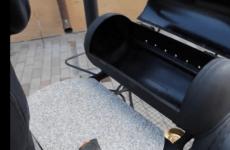Compressor pressure switch. Connection and setup. How to connect a compressor from a refrigerator How to connect a compressor in a domestic refrigerator
In most cases, inexpensive models of air compressors are not equipped with a pressure switch, since such products are mounted on the receiver. Based on this, many manufacturers think that visual control of pressure through a pressure gauge will be more than enough. However, with prolonged use of the device, if you do not want to bring the engine to overheating, it makes sense to install a pressure switch for the compressor! With this approach, the shutdown and start of the drive will be carried out automatically.
Scheme and device
The device is divided into the following types:
- Starting the electric motor of the compressor when the pressure drops below the set value (normally closed);
- Switching off the engine when the air pressure rises above the normal mark (normally open).
Springs are considered to be the actuating element in the device. Their compression force is measured using a special screw. As a rule, manufacturers adjust the compression force of the springs in such a way that the pressure in the pneumatic network is in the region of 4-6 at. This parameter is always exactly indicated in the instructions.

Since the flexibility and stiffness of springs always largely depend on temperature, all elements of industrial pressure switches are designed and created taking into account subsequent operation at temperatures from minus 5 to plus 80 degrees.
The pressure switch provides for 2 mandatory subassemblies in its design - a mechanical switch and an unloading valve. The mechanical switch protects against accidental starting of the engine, thus performing the stand by function. After pressing the drive of the device starts, after which the compressor starts to work in automatic mode. Without pressing the button, the electric motor will not work even with reduced pressure in the pneumatic network.

The unloader valve is connected to the air supply line between the compressor and the receiver and is responsible for the operation of the engine. When the compressor drive is turned off, the unloader valve on the receiver disposes of excess compressed air, thus saving the moving parts from the extra effort required to restart the compressor. This prevents the motor from being overloaded with torque. When the unloaded engine is turned on, the valve is closed, which prevents the creation of excess load.
For greater safety, pressure switches are supplied additionally. safety valves, which turn out to be very useful, for example, in case of a piston breakdown, a sudden stop of the electric motor, and in any other emergency!
A thermal relay can also be installed in the pressure switch housing, allowing you to monitor the current strength in the primary circuit. If this parameter is increased, the thermal relay will automatically turn off the engine, thus protecting the device from overheating and breakdown of the windings.
Connecting and setting the pressure switch
The pressure switch in the compressor unit circuit is located between the secondary motor control circuit and the unloader valve. As a rule, the pressure switch for the compressor is equipped with 4 threaded heads, one of which is designed to connect the control pressure gauge, the second - to connect the device to the receiver. A ¼-inch threaded plug is installed on one of the remaining ones, and a safety valve is placed on the last one. The presence of a free connector makes it possible to place the control pressure gauge in the most convenient place.

The connection of the pressure switch is carried out in the following order:
- A device is connected to the unloading valve of the receiver.
- A control manometer is located. Otherwise, the threaded entry is plugged.
- The motor control circuits are connected to the terminal contacts. If the voltage in the network changes, then the connection should be made through the network filter! It is also necessary when the contact power exceeds the indicator for which the engine is designed.
- If necessary, the compressed air pressure readings can be adjusted using the adjusting screws.

Before connecting the pressure switch to the compressor, it is worth checking the compliance of the mains voltage with what is indicated by the manufacturer! For example, a two-contact group is used for a three-phase network with a voltage of 220V, a three-contact group is used for a voltage of 380V.
Adjustment is carried out when the receiver is at least 2/3 full. To do this, the relay is disconnected from the power supply, after which, with the cover removed, the spring compression is adjusted. The adjustment screw with the axis of the larger spring is responsible for the maximum value of the working pressure. The second adjustment screw, with a smaller spring, allows you to adjust the pressure difference. In most cases, the manufacturer will indicate on the board the direction of rotation for increasing and decreasing pressure. Here you can also see the generally accepted designation of pressure - the Latin letter "P" and "ΔP".

In some models, to reduce the time required to set the pressure, the manufacturer places an adjusting screw outside the pressure switch housing. In this case, the result is controlled based on the readings of the manometer.
DIY pressure switch
If you have a working thermostat from an old refrigerator at home, as well as some work skills, then you can safely make a pressure switch for a compressor with your own hands. However, it is worth warning in advance that such a solution cannot differ in great practical possibilities, since the upper pressure with such an approach will be limited only by the strength of the rubber bellows.
It is most convenient to convert the KTS 011 thermal relay into a pressure switch, because they differ in the reverse sequence of operation - when the temperature in the chamber decreases, they turn off, when the temperature rises, they turn on.
Work order
After opening the cover, the location of the required group of contacts is found out, for this purpose the circuit is called. The first step is to refine the connection of the compressor with the thermal relay: the contact groups are connected to the terminals of the electric motor circuit, and the unloading valve is connected to the outlet pipe with a control pressure gauge. The adjusting screw is located under the thermostat cover.
When the compressor is started, the screw rotates smoothly, at the same time, you need to monitor the readings of the pressure gauge. It is worth taking care that the receiver is filled by 10-15 percent! To achieve the minimum pressure, it is necessary to smoothly move the stem of the face button. To this end, the cover is placed in its original place, after which the adjustment is performed almost blindly, since there is nowhere to install the second pressure gauge.

For safety reasons, it is not recommended to set the thermostat pressure beyond 1-6 atm! If devices with a stronger bellows are used, the maximum range can be raised to 8-10 atm, which is usually enough for most tasks.
The capillary tube is cut only after you make sure that the relay is working. After the release of the refrigerant inside, the end of the tube is placed inside the unloading valve and soldered.
The next step is a homemade pressure switch for the compressor is connected to the control circuit. To do this, the relay is fixed to the control board with a nut. The locknut is screwed onto the threads on the stem, thanks to which the air pressure can be adjusted in the future.
Taking into account the fact that the contact group of the thermal relay from any refrigerator is designed to work with high currents, they can switch quite powerful circuits, for example, secondary circuits when working with a compressor engine.
When a compressor is urgently needed, you can take this device from an old refrigerator. In order to adapt it to the case, you need to take care of the correct connection, in this case, the stability and service life of the work will increase.
When removing the compressor from the refrigerator, care must be taken to preserve the oil present in it. The cable that leads to the temperature sensor is cut, the resistance is measured and the finding of closed contacts is studied, which will be required when assembling the circuit. Turn on the compressor to make sure it works. Determine the location of the outlet, in the future, the installation of an oil filter will follow there. To protect the compressor from overheating and damage, install a good relay. It is important to know the brand of the refrigerator and take the relay from a similar device. Carefully study the diagram and make the connection in the same order as in the refrigerator. If the documentation for this device is lost, you can see the electrical circuit. We equip the device with a receiver, purchasing it in a store, or we make it ourselves. For assembly, you will need a plastic bottle, in the lid of which you need to make two holes and insert the inlet and outlet tubes there. Then pour epoxy into the bottle and turn it upside down. The resin will soon harden, and the cap with the tubes will permanently stick to the bottle. The compressor is connected to the desired device using hoses. windshield washer You can find them at an auto shop. Carefully monitor the oil level to avoid overheating, and the operating time of the unit should not exceed 45 minutes.

When working with electrical appliances, safety precautions must be observed. Carefully check that the wires are insulated and connect only with dry hands. You should also not place high hopes on a home-made compressor, because no one will give a guarantee for its long-term performance. So if possible, it's easier to buy a new one.
It is not necessary to buy a compressor for painting work or pumping wheels - you can make it yourself from used parts and assemblies taken from old equipment. We will tell you about the designs that are assembled from improvised materials.
In order to make a compressor from used parts and assemblies, you need to be well prepared: study the diagram, find it on the farm or buy some parts. Consider several possible options for self-designing an air compressor.
Air compressor from refrigerator and fire extinguisher parts
This unit runs almost silently. Consider the scheme of the future design and make a list of the necessary components and parts.
 1 - tube for filling oil; 2 - starting relay; 3 - compressor; 4 - copper tubes; 5 - hoses; 6 - diesel filter; 7 - gasoline filter; 8 - air inlet; 9 - pressure switch; 10 - cross; 11 - safety valve; 12 - tee; 13 - receiver from a fire extinguisher; 14 - pressure reducer with pressure gauge; 15 - moisture-oil trap; 16 - pneumosocket
1 - tube for filling oil; 2 - starting relay; 3 - compressor; 4 - copper tubes; 5 - hoses; 6 - diesel filter; 7 - gasoline filter; 8 - air inlet; 9 - pressure switch; 10 - cross; 11 - safety valve; 12 - tee; 13 - receiver from a fire extinguisher; 14 - pressure reducer with pressure gauge; 15 - moisture-oil trap; 16 - pneumosocket
Necessary parts, materials and tools
The main elements are taken: a motor-compressor from a refrigerator (preferably made in the USSR) and a fire extinguisher cylinder, which will be used as a receiver. If they are not available, then you can look for a compressor from a non-working refrigerator in repair shops or at metal collection points. A fire extinguisher can be purchased on the secondary market or you can bring friends to the search, at work who may have decommissioned OHP, ORP, DU for 10 liters. The fire extinguisher must be safely emptied.

In addition, you will need:
- pressure gauge (as for a pump, water heater);
- diesel filter;
- filter for gasoline engine;
- pressure switch;
- electric toggle switch;
- pressure regulator (reducer) with pressure gauge;
- reinforced hose;
- water outlets, tees, adapters, fittings + clamps, hardware;
- materials for creating a frame - metal or wood + furniture wheels;
- safety valve (to relieve excess pressure);
- self-locking air inlet (for connecting, for example, to an airbrush).

Another viable receiver came from an automobile tubeless wheel. Extremely budget, although not very productive model.
 Wheel receiver
Wheel receiver
About this experience, we suggest you watch a video from the author of the design.
How to connect the compressor?



If you urgently need a compressor, and there is no time to go to buy it, you can take a compressor from an old refrigerator. Let's talk about how to connect the compressor to the necessary equipment.
How to connect a compressor: instructions
Please note that when removing the compressor from the refrigerator, be sure to cut the cable coming from the temperature sensor, otherwise you will not be able to pull it out. Then proceed as follows:
- Install a relay on the compressor - this will help protect it from overheating and current surges. The relay must be installed according to the instructions that come with it.
- Now equip the compressor with a receiver. If you use a purchased one, then connect it according to the diagram that comes with it. But you can make such a device yourself. Take a plastic bottle (1 liter) and make 2 holes in its cap with an awl. Install the outlet and inlet tubes there, and then pour epoxy into the container and turn it over. Then leave it all for a few hours. When the resin hardens, the cap with tubes will stick securely to the bottle. As a result, the resulting device will last for many years. It is connected to the discharge pipe, which is located next to the valve.
- The last thing to do is to connect the unit to the necessary device. To do this, it is best to use hoses designed for windshield washer. They can be purchased at any automotive store. Hoses are installed in the holes of the compressor located on its upper part.
After you have connected the compressor, you need to turn it on and check for operability. If you have done everything correctly, then there will be no problems with its functioning.
When operating the compressor, you need to monitor the oil level in it. It is important that it does not drop to a critical level, otherwise the unit will overheat and quickly fail. At the same time, use oil with additives and mineral components for filling.
Please note that the operating time of the compressor from the refrigerator should not exceed 45 minutes. After that, leave the compressor alone for at least 10 minutes. When operating the compressor, do not forget about safety precautions: connect the device only with dry hands, make sure that the wires are insulated, do not allow it to overheat, and so on.
The compressor pressure switch is a device that automatically turns the compressor electric motor on and off. Other names are telepressostat and pressure switch.
The relay is used in the control of a reciprocating compressor in order to maintain the desired working air pressure in the receiver. Occasionally used on a screw compressor.
1 Purpose
The function of air compressors is to receive a jet of air with a certain pressure, it must be stable and uniform. It should also be possible to change the parameters of this jet. Each compressor has a reservoir (cylinder) for air. It must have the necessary pressure. When lowering it, you should turn on the motor to replenish the air supply. In case of excessive pressure, the air supply must be stopped so that the container does not burst. This process is controlled by a pressure switch.
With its proper functioning, the engine is preserved, it is protected from frequent switching on and off, the system operation is uniform and stable. The tank membrane is connected to the pressure switch. Moving, it can turn on and off the relay.
1.1 Working principle
Considering the pressure in the system, the relay serves to open and close the voltage circuit, starts the compressor in case of insufficient pressure and turns it off when the parameter rises to a predetermined level. This is the principle of normally closed loop operation for motor control.
The reverse principle of operation is also found, when the relay turns off the electric motor at the minimum pressure in the circuit, and turns it on at the maximum. This is a normally open loop circuit.
The working system consists of springs of different stiffness levels that respond to pressure changes. During operation, the deformation forces of the springs and the pressure of compressed air are compared. When the pressure changes, the spring mechanism is activated, and the relay closes or opens the electrical circuit.
1.2 Accessories
The air compressor relay may contain the following components:

1.3 Detailed description of the pressure switch for the compressor (video)
2 Wiring diagram
Pressure switches for compressors can be for different load connection schemes. For a single-phase engine, a 220 volt relay is used, with two groups of connections. If we have three phases, then install a device for 380 volts, which has three electronic contacts for all three phases. For a motor with three phases, you should not use a relay to the 220 volt compressor, because one phase will not be able to turn off from the load.
There are also relays for only 12 volts. For example, for a 12V wheel inflation compressor.
2.1 Flanges
Additional connection flanges may be included with the device. Usually equipped with no more than three flanges, with a hole size of 1/4 inch. Thanks to this, additional parts can be connected to the compressor, for example, a pressure gauge or a safety valve.

2.2 Relay installation
Let us turn to such a question as connecting and adjusting the relay. How to connect the relay:
- We connect the device to the receiver through the main output.
- If necessary, connect a pressure gauge if flanges are present.
- If necessary, we also connect an unloading and safety valve to the flanges.
- Channels that are not used must be closed with plugs.
- Connect the electric motor control circuit to the contacts of the pressure switch.
- The current consumed by the motor must not exceed the voltage of the pressure switch contacts. Motors with low power can be installed directly, and with high power they put the necessary magnetic starter.
- Adjust the parameters of the highest and lowest pressure in the system using the adjusting screws.
The compressor relay should be adjusted under pressure, but with the engine power off.
When replacing or connecting a relay, you should know the exact voltage in the network: 220 or 380 volts
2.3 Relay adjustment
The pressure switch is usually sold already set and adjusted by the manufacturer, and does not need additional adjustments. But sometimes it becomes necessary to change the factory settings. First you need to know the range of parameters of the compressor. Using a pressure gauge, determine the pressure at which the relay turns on or off the motor.
After determining the desired values, the compressor is disconnected from the network. Then remove the relay cover. Under it there are two bolts of slightly different sizes. The larger bolt adjusts the maximum pressure when the engine should be turned off. Usually it is denoted by the letter P and an arrow with a plus or minus. To increase the value of this parameter, the screw is turned towards the "plus", and to decrease - towards the "minus".

The smaller screw sets the pressure difference between on and off. It is indicated by the symbol "ΔΡ" and an arrow. Usually the difference is set at 1.5-2 bar. The higher this indicator, the less often the relay turns on the engine, but at the same time the pressure drop in the system will increase.
3 Homemade production
Very difficult to manufacture. Sophisticated technologies and excellent knowledge are required. The mechanism works when it passes through certain elements of the electric current. At certain current values, they heat up and turn the device on or off. Even with extensive experience, such a mechanism is difficult to manufacture. For homemade compressors, relays from old refrigerators are used.
The pressure switch for the compressor wears out, working in difficult conditions, and fails. Repairing it is unprofitable and difficult. It is more profitable to just buy a new relay. There are inexpensive models. If you choose branded devices, then for that kind of money it is better to buy a new compressor.
- This is a universal tool that is necessary for various repair and construction work.

The pneumatic device is safe and convenient, unlike gasoline or electric. There are also additional devices that work with air under pressure: tire inflation guns, paint sprayers, flushing guns, blow guns, extension cords and others.
With the help of a relay for the compressor, the system works automatically, the required pressure in the receiver is constantly maintained.






